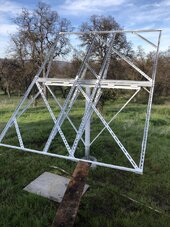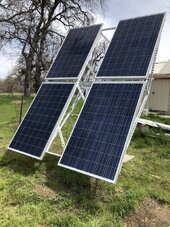Do you have a larger panel than mine. Mine is only 3000w. I see that this charge controller can handle up to 1400W from the panels.
Not sure what this question means? What does "larger panel" refer to? Do you mean the SunGold Power unit? It is appropriate to call it an All-in-One, or AiO, because it incorporates a charge controller, an inverter, and a charger, all in one box.
When I move the panel array it would only be 30 feet from the charge controller. Currently it is about 20 feet from the charge controller.
I have Midnight200 controllers. That lets me run four 30V residential panels in series to get 120VDC. I can run the raw solar power ~125' away without any detectable voltage drop in 10 gauge wire. You could do the same thing with a Tracer 5420 or 6420, which also has a 200V limit. Remember, it's the Voc on the coldest day of the year, not the typical output voltage.
Would the tracer replace my current charge controller
It could work side by side with your AiO. Don't refer to your SunGold as a controller. It has a charge controller built in, but it is more than just a controller. What you would do in this situation is wire the Tracer directly to the batteries, and wire the solar into the Tracer, not using the solar terminals on the SunGold at all. Only the battery to inverter terminals would be connected between the batteries and the SunGold. So, the Solar fuels the Tracer, the Tracer charges the batteries, and the batteries fuel the SunGold. Remember, always connect the battery to the Tracer first, before connecting the solar to the Tracer.
MichaelK, it looks like the Tracer is a communication piece of equipment that would leave me communicate with my charge controller.
The Tracers can be purchaced with the optional MT-50 data unit. You string a wire from the controller itself over to the spot where you want to monitor it, and mount it on the wall. So, you can see how the charging system is operating without walking outside to visit the controller.






